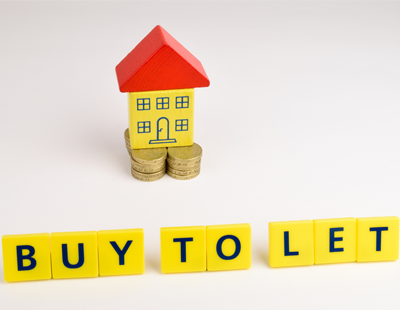In spite of the sector growing by 45% over the last decade, adding 1.5m properties, the number of non-decent homes has fallen in absolute terms too; down by 275,000.
While there is clearly more work to do, the improvement is significant and sustained. As a result, the latest English Housing Survey shows that the vast majority (84%) of private renters were satisfied with their current accommodation.
In exploring the existing state of the buy-to-let market and the opportunity that refurbishment can provide both portfolio and amateur landlords, the study showed that 70% of landlords who have refurbished property did so to improve quality of their residential investment, with 45% doing so to boost financial returns.
InterBay’s analysis shows that landlords typically spend £12,000 per refurbishment. This varies considerably on the type of refurbishment.
Typical spending per heavy refurbishment (substantial works such as conversion, extensions and often requiring planning permission) on average stood at £40,000, compared to just £7,000 on a light refurbishment (typically including modernisation or redecoration).
Many landlords take a “little and often” approach to refurbishments, seeking to ensure they maintain rental income and the quality of the property, while a minority seek more significant and costly works to add value or convert a property.
Some 28% of landlords spent less than £5,000 on their last refurbishment, and 43% spent less than £10,000. At the other end of the scale, just 13% spent more than £100,000.
As well as ensuring a property is in a good enough condition to rent, refurbishment typically bolsters a rental property’s value and income potential. 74% of those who undertook a refurbishment said it enhanced the property’s value, and 82% saw monthly rents rise.
The average rent for a refurbished property rose by £81 per month, up by 8%. Even after accounting for those who did not see the value of their property rise, the typical refurbishment added £13,000 to a property’s value, meaning landlords more than make their money back on the capital gains alone.
For those that saw the value of their home rise, often those undertaking larger-scale development, the increase was substantial. These landlords estimated refurbishment boosted the value of their property by 9%, adding around £20,000.
The larger the renovation, the larger the average increase in value too. While a light refurbishment typically adds around £9,000 in value, compared to an outlay of £7,000, a heavy refurbishment, involving a £40,000 spend on average, adds £96,000 to a property’s value.
Darrell Walker, head of sales at InterBay Commercial, said: “It may be an easy target for political point-scoring, but the private rented sector has been a success story since the financial crisis, catering for a growing proportion of the population that either cannot or chooses not to purchase a home. As the PRS has grown, it has also professionalised. As it has done so, the standard of accommodation for tenants has improved drastically too.
“Refurbishment has been central to this improvement. It is a win-win for tenants and landlords. Tenants see better quality accommodation, while landlords improve the rent they receive and maximise the value of the property. And with interest rates still bumping along the bottom, those borrowing to support refurbishment can access historically cheap funding to enable improvement works.
“Nonetheless, continued investment in the sector is not a foregone conclusion, and it must be supported rather than undermined. Landlords have been buffeted by the headwinds of policy change since 2015, and costs have risen for investors. Should this rate of change continue, it will weigh on landlords’ decisions to spend more on their portfolios, and risks undermining a decade of progress.“
Want to comment on this story? Our focus is on providing a platform for you to share your insights and views and we welcome contributions.
If any post is considered to victimise, harass, degrade or intimidate an individual or group of individuals, then the post may be deleted and the individual immediately banned from posting in future.
Please help us by reporting comments you consider to be unduly offensive so we can review and take action if necessary. Thank you.













.png)






Join the conversation
Be the first to comment (please use the comment box below)
Please login to comment